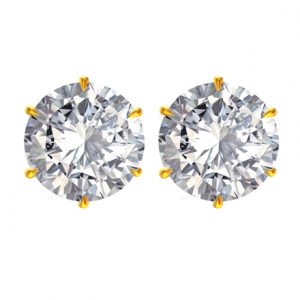Buying diamond jewelry can be puzzling because of the intimidating abundance of choice presented by the stores. Whether it’s your first time or not, you, as a buyer, should be well informed about diamonds in general and the little seemingly unimportant things that the salesman may try to keep from you, but define your purchase in the long run. Almost all buyers’ guides for diamonds start with the discussion on the quality-defining measurements, together known as the 4Cs. So will this one. Let’s delve deep into the 4Cs that determine the success and failure of an investment.
Cut: The cut of the diamond is not the option to select a shape of diamond of your liking. It has other factors interlaced with it too. The cut of a stone is directly proportional with its polish, proportion and symmetry. That’s why they have cuts like brilliant, asscher, radiant and such. Each has a unique feature which is the number of style of facets. Some cuts have step facets while others have multi-directional cuts. It is on these sides and vertexes that the reflectivity of the stone increases or decreases, something that we know as the brilliance and fire of a diamond.
Color: The color of the stone has to do with its hue and clarity. If a colorless stone is what you want, then you must lean towards the D to F segment of the scale. These grades have some of the most translucent stones sold in the market. The difference in the colors of stones between D and F is unperceivable with anything less than 10 times magnification. Those between N to Z start to look a little yellowish because of the presence of other minerals. If you don’t mind a little color in your diamond, then these ones are just fine.
Clarity: The clearer a stone is, the more sparkling it looks under bright light, and this applies to both achromatic and colored diamonds. The stones with highest clarity which means no inclusions whatsoever are found within the grades FL to IF. This range also has the most expensive diamonds. Those down below have negligible to visible inclusions and blemishes.
Carat: Lastly, the carat of your stone calculates its cost. If your diamond is below 1 carat, then it is measured in cents and its numerical value is presented with a decimal. Cluster stones are weighed as cents while solid ones are weighed in carat.






